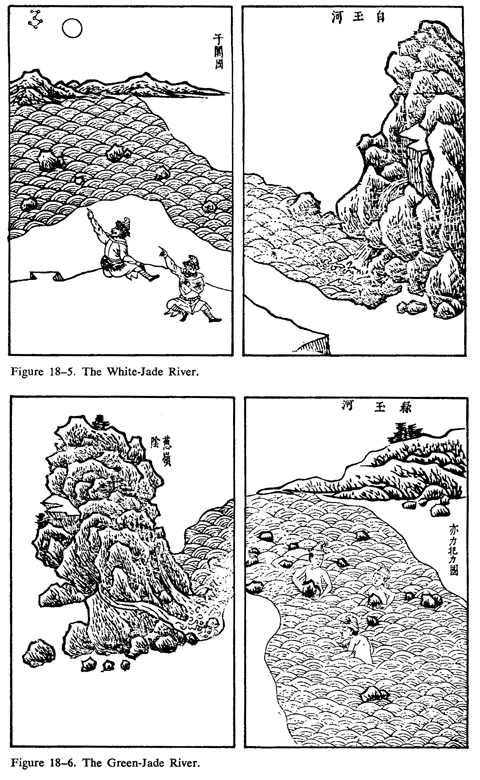CLXXIX
And so many souls, exiled to the frozen wastes of Cyberia, with only their iPhones to keep them warm…
What tyrant makes them suffer so?
Unfathomable urges
Last time is not a reliable indicator of this time
General Semantics looks to be large and in charge. But Corporal Punishment keeps the troops in line.
Rage Against the Machine.
Hmmm. What if rage is the machine?
Tromper = a French transitive verb meaning to deceive, abuse someone’s confidence, to be unfaithful to, to cheat on, to disappoint, to elude…
c.f. se tromper, to be wrong or mistaken
Also, trompe as in trumpet, or in anatomy, a tube-shaped structure
Made by mussels [or oysters], pearls are conceived inside the mollusks through the shining of moonlight; the most valuable ones being the oldest. It is incorrect to hold, as some people do, that pearls are also contained in snake intestines, dragon jaws, and shark skins…
The pearls produced in China come from the two [pearl] beds of Lei-chou and Lien-chou [prefectures in southern Kwangtung, long known for their pearl production].
When a mussel [or an oyster] conceives a pearl, it does so by creating substance out of immaterial matter. While the common small aquatic species are often eaten by other fishes and therefore are short-lived, the mussel [and oyster] are protected by their hard shells. Even if they were swallowed whole [the eater] would not be able to digest them. Hence the mussel [and oyster] can live to be centuries old and create the priceless treasure [of pearls].
When a pearl has been conceived, the mussel [or oyster], even if it lives in water a thousand fathoms deep, will open its shell when the full moon shines, letting the moonbeams fall on the pearl, of which the form is made out of the essence of the moon.
The Harvest Moon especially delights aged mussels – on a clear night they will float with opened shells all night long, following the course of the moon and turning in every direction to absorb the moonlight… [op. cit. Sung, pp. 286]
“Our culture is on the verge of extinction because young people under 30 head into the city for work,” said a woman… [who] gave only her surname, Lam.
“Look at our hands; you can see that we do hard manual labor,” Ms. Lam said, extending her calloused fingers. “Our life depends on the weather and the water.”
The residents of this floating village are members of the Tanka group, an ancient people scattered across southern China who have survived on coastal waterways and on the margins of society. But Guangdong is a cauldron of manufacturing and urban growth. Cities have engulfed once-quiet towns, and the Tanka way of life is disappearing.
A cement plant on the shore opposite the village in Datang discharged fumes into the air. Apartment blocks have risen along the riverfront The briny, tidal water of the Bei River, the residents’ livelihood, had been dredged and is polluted, overfished and crowded with ships.
“Many Tanka people who have settled onshore haven’t told their children about their Tanka background,” said Wu Shuitian, a professor at Guangzhou University who studies the Tanka people…
Yet [they] rarely voiced regret for the passing of their old ways… “We have no choice but to hang onto our old way of life, because it’s the only skill we know,” Mr. Chan [a Tanka fisherman] said. “I don’t want our tradition to be preserved if the younger generation doesn’t want to keep it.”
“People onshore used to very much look down on the lives of the people living on boats,” said Xie Diying, a retired cultural affairs official in Guangzhou… who has spent decades preserving Tanka saltwater songs and promoting their revival.
“This has left a big shadow in their hearts,” she said. “Many young people don’t know that their own parents were water-faring people.”
After the Communist Party came to power… the government began to move them onshore and put their children in schools.
But the Tanka on their boats remain a people apart, an underclass in the region’s economic boom. A few thousand of them still live on the water across southern China, although precise counts do not exist.
Many of them in Guangdong shuttle between small apartments and their houseboats, which they move up and down the coastal rivers to be near the best fishing.
“Before we could sing the saltwater songs, but very few people know them now – I don’t,” said Tam Wing-keung, 60, a fisherman. But he said fishing was in his bones. “Even of you threatened to kill me, I couldn’t do anything else,” he said. “This is my only skill.” [Chris Buckley and Adam Wu, “In South China, an Ancient People Watch Their Floating Life Dissolve, New York Times, 1/24/17, A4:1]
The pearl mussels [and pearl oysters] are gathered by the Tan people who are most devout in offering sacrificial animals to the “Sea God” in the third month of every year. These people eat raw sea food and are able to distinguish the color of the sea water after diving into it. Spots occupied by the flood dragon [as indicated by the color] are left strictly alone…
Pearling boats are constructed somewhat wider and rounder than other vessels. Large numbers of straw mats are taken along on an expedition. When a boat comes across an eddy, mats are tossed into the water, thereby gaining a safe passage. The diver is tied at the waist with a long rope, [which is attached to a winch and attended by people] on the boat, and dives into the water carrying a basket.
The open end of a curved pipe is attached to his nose and mouth enabling him to draw breath, and his ears and neck are covered with a neckwear of cured leather. The farthest depths that pearl divers reach are about for or five hundred ch’ih…
When a diver feels short of breath, he will pull on the waist rope and will be quickly hoisted out of the water. Some, whose luck happens to be adverse, are drowned. A diver who has just emerged from the water must be wrapped immediately in a hot boiled woolen blanket, otherwise he will die of cold shivers… [op. cit. Sung, pp. 286-298]
The Harvest Moon especially delights aged mussels – on a clear night they will float with opened shells all night long, following the course of the moon and turning in every direction to absorb the moonlight…
Full Corn Moon or Full Harvest Moon: This full moon’s name is attributed to Native Americans because it marked when corn was supposed to be harvested… [It is] the full Moon that occurs closest to the autumn equinox. In two years out of three, the Harvest Moon comes in September, but in some years it occurs in October. At the peak of harvest, farmers can work late into the night by the light of this Moon… Corn, pumpkins, squash, beans, and wild rice the chief Indian staples are now ready for gathering. [Full Moon Names and Their Meanings, Farmers Almanac online]
The prostitutes and courtezans of Canton belonged to a special ethnic group, the so-called tanka (tan-chia, also tan-hu), descendants of South-Chinese aborigines who had been driven to the coast and there engaged in fishing, especially pearl-fishing. They were subject to various disabilities, i.a. interdiction of marriage with Chinese, and of settling down on shore. They speak a peculiar dialect, and their women do not bind their feet. It was they who populated the thousands of floating brothels moored on the Pearl River at Canton. [From a contemporary, probably 17th century European source quoted by Robert Hans van Gulik. Sexual Life in Ancient China: A Preliminary Survey of Chinese Sex and Society From ca. 1500 B.C. till 1644 A.D. Leiden, Netherlands: Brill Archive, 1974, p. 308]
Landscape With the Rape of Proserpina – no, I mean Seascape With the Rape of Europa – no… Ruinscape With the Rape of the Sabines, no –
Certain Chinese myths hold that Barbarians were descended from various animals. The Tanka people, supposedly, had water snakes as ancestors. Because of this, it was claimed that the Tanka that could remain under water for as long as three days, without breathing air. [Wolfram Eberhard, China’s Minorities: Yesterday and Today. Belmont, CA: Wadsworth, 1982. p. 89]
Famous was the brothel-quarter of Nanking, known as Ch’in-huai, named after the waterway it was situated on. The girls lived most of the time in the hua-fang “painted boats”, luxuriously appointed floating brothels. Sumptuous banquets were held on board enlivened by song and dance, and the guests could stay there the night. The Ming writer Yü Huai (1616-1696) has left a collection of reminiscences of the beautiful and accomplished girls of that quarter… [which he calls] the “Capital of Immortals of the World of Lust”… [op. cit. van Gulik, p. 308]
Ah, the deltas…
If you come down to the river
Bet you gonna find some people who live
You don’t have to worry if you got no money
People on the river are happy to give…
Rollin’, rollin’…
The good, the bad, and the discombobulated
A river springs from A-ju Mountain and divides in two at Ts’ung-ling, one called the White-Jade River [Figure 18.5] and the other, the Green-Jade River [Figure 18.6.]…
Since jade is formed by the shining essence of moonlight, those who gather it along the river banks often keep watch there under the autumn moon. When an especially brilliant patch of light is spied, there the crude jades are sure to be found…
The White-Jade River flows southeastward, the Green-Jade River northwestward. There is a place called Wang-yeh in I-li-ba-li where numerous crude jade rocks are found in the river. According to local custom, unclothed women are sent to gather these. The theory is that, [since both women and jade are… yin,] they will attract each other. As a result the jades will not disappear and can be easily picked up by the women [Figure 18.6]. This is probably and indication of the barbarians’ ignorance…
The [hand picked] crude jades are brought, with the aid of either boat or camel caravans, to Kan-chou and Su-chou by the local Turbaned Moslems, having passed through Chuang-lang and Chia-yü Passes. (The tradition of these local Moslems requires that a new layer of turban be added to a man’s head with each additional year, so in old age a man’s headdress is extremely clumsy. These people are therefore called Turbaned Moslems. Even their king is careful not to show his hair. When asked the reason for this practice, they answer that the sight of hair brings famine in that year. This is utterly ridiculous.)…
Once the jade is cut, fine workmanship follows; the best tool for the latter being knives made of pin-t’ieh [probably meteoric nickel-iron]. (Pin-t’ieh is found in the meteorites around the Hani Garrison [in Sinkiang province]. It is obtained by breaking open the meteorites.) The odd pieces of jade resulting from cutting, carving and polishing can be used to make inlay ware. Extremely fragmented pieces are ground, screened and mixed with ash to fill cracks in lutes. This is why the sound of the lute has a jadelike quality. When the design is to delicate for the use of a knife or chisel, the pattern is first traced on the jade with the liquid from the warts of a toad, and then carved. The way in which different things in Nature are able to control each other is indeed mysterious. [op. cit. Sung, 301-304; n.b. the use of Chinese place names does not necessarily indicate that the places referred to are within the borders of China.]

The origin of pearls and jade is different from that of gold and silver. While gold and silver take form deep under the earth’s surface after having received the essence of the sun, pearls, gems and jade absorb the moon essence and do not need the earth’s covering. The gems in their pits exposed to the blue skies above; pearls, denizens of deep waters; and jade, existing beside precipitous streams; all need only the covering of atmosphere and water.
For [the protection of] the pearls, there is a “shell fortress” under water, presided over by the shell goddess and guarded by immortal dragons, which no man dares to violate. When destiny points to certain pearls that have to do service in the human world, they are pushed out by the shell goddess and so are taken by pearl divers. It is likewise impossible to get the jade that has just begun to form, for it is obtainable only after the jade god has pushed it out into the river, which is a thing just as strange and mysterious as the fortress for pearls…
The makers of lazurite lamps and beads are the people of Shantung province, north of the Huai River. This is because nitre is produced there.
Nitre is a non-substantial material and is capable of transforming itself into nothing when heated with fire. In contrast, black lead is a heavy-bodied material [and consequently is difficult to destroy with fire]. When these two materials are heated together, nitre will try to induce lead to become nothing, while lead, on the other hand, will strive to keep nitre in the present world.
The result of their melting in the same pot is the creation of a translucent and lustrous appearance. This is the manifestation of the wonders of the universe through common earthly occurrences. With this, I close my volume on the Divine Creation. [op. cit. Sung, 308]

